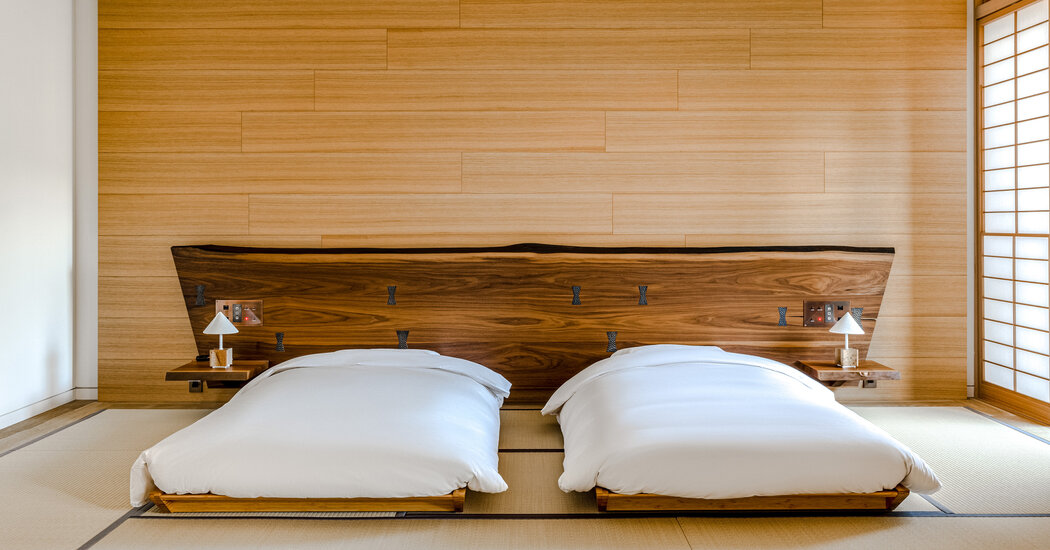
The pandemic lockdown in Japan coincided with a flurry of new hotels, especially in Kyoto, where the Park Hyatt, Aman and Four Seasons were joined by a group of independent properties and the first Ace hotel in the archipelago. When the country finally reopened to foreign visitors in October 2022, tourists came flooding back to the city of 800-year-old temples and bamboo forests spoiled for choice of accommodations, at a range of prices. The number continues to grow: Next month, the wellness-focused Six Senses brand will open its first Japanese outpost in the city’s Higashiyama district, home to many of the main tourist sites. Here, a look at five of Kyoto’s newer hotels that are redefining the city’s hospitality scene.
Andre Fu, the interior designer behind hotels like the Upper House in Hong Kong and Villa La Coste in Aix-en-Provence, France, has infused his signature aesthetic (extravagantly refined, with warm woods and luxurious textures) within the confines of a particularly historic area of Kyoto. The 161-room Mitsui, opened in late 2020, sits across from Nijo Castle, an enormous 17th-century compound and a UNESCO World Heritage site. It’s in stark contrast to the hotel, whose only timeworn element is an imposing entrance gate — a traditional wood structure over 300 years old and a remnant of the days when the Mitsui family lived on the grounds. Once past the gate, you’ll find a glass-and-steel building, designed by the Japanese architect Akira Kuryu, and landscaping that’s meant to echo the original garden pathways of the Mitsui residence, planted with cherry trees and steppingstones that meander above a glassy pond. The four food and drink venues include the French-Japanese Toki, overseen by the chef Tetsuya Asano (previously of the Ritz Paris), and the Garden Bar, strategically positioned to capture seasonal views, like the spring cherry blossoms and blazing autumnal foliage, out of massive double windows. Rooms from about $1,360 a night.
The youthful Ace hotel brand might seem like an odd fit in staid Kyoto. But this 213-room property, which opened in 2020, fits seamlessly into the city center thanks to a collaboration between the Japanese architect Kengo Kuma and the California-based design firm Commune. Kuma, who designed the Japan National Stadium (the centerpiece of the 2021 Tokyo Olympics), renovated the imposing 1920s-era, red brick Kyoto Central Telephone Office, while adding an industrial-looking building — sheathed in copper sulfide plating, cedar, glass and concrete — next door. Commune infused the guest rooms with Ace’s signature mix of bright colors and patterns: original dyed prints from the Japanese folk artist Samuro Yunoki sit alongside Tivoli radios, turntables and vintage records. The most popular part of the hotel, though, might be the street-level branch of Stumptown Coffee Roasters — the first in Japan. From about $300 a night.





